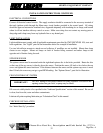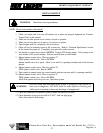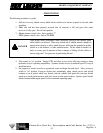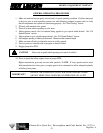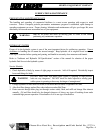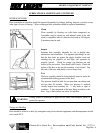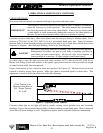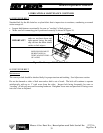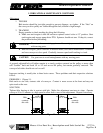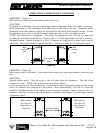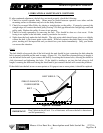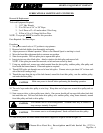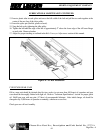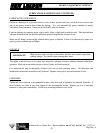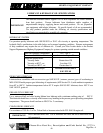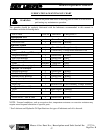
Please Give Part No., Description and Unit Serial No.
HIGHWAY EQUIPMENT COMPANY
40
97373-A
Page Rev. B
LUBRICATION & MAINTENANCE CONTINUED
Adjustment
1. TENSION
Belt tension should be just tight enough to prevent slippage—no tighter. If the “flats” on
the conveyor drive pulley are visible through the belt, tension is high enough.
2. TRACKING
Empty spreader to check tracking by doing the following:
A. Make sure truck engine is shut off and move spinner control valve to “0” position. Start
truck engine and engage pump drive PTO. Spinners should not turn. If they do, correct
the problem before proceeding.
WARNING
Do not work near rotating spinners. Severe injury can result from contact
with moving parts.
B. Run truck engine, place controller in manual mode (see control manufacturer’s manual)
and run conveyor at slow speed. Gradually increase speed until tracking is visual.
CAUTION
Use great care to avoid entanglement with any moving parts.
A properly adjusted belt will either remain in a steady position centered on the pulley or more often
will “wander” back and forth 1/4 to 1/2 inch across the pulley, but remain generally centered. The
conveyor belt sides should not curl or scuff.
Improper tracking is usually due to three basic causes. These problems and their respective solutions
follow:
PROBLEM 1: (Figure 11)
Belt tracks to one side, contacts side of conveyor. Contact is more severe at the front and may not
quite touch at the rear.
SOLUTION:
Tighten idler bearing at side in contact with belt. Make this adjustment one turn at a time. Operate
conveyor 10 to 15 minutes at a high speed to allow belt to react to the adjustment. Repeat if necessary.
Figure 11
Belt
contacts
this side
Belt
contacts
this side



